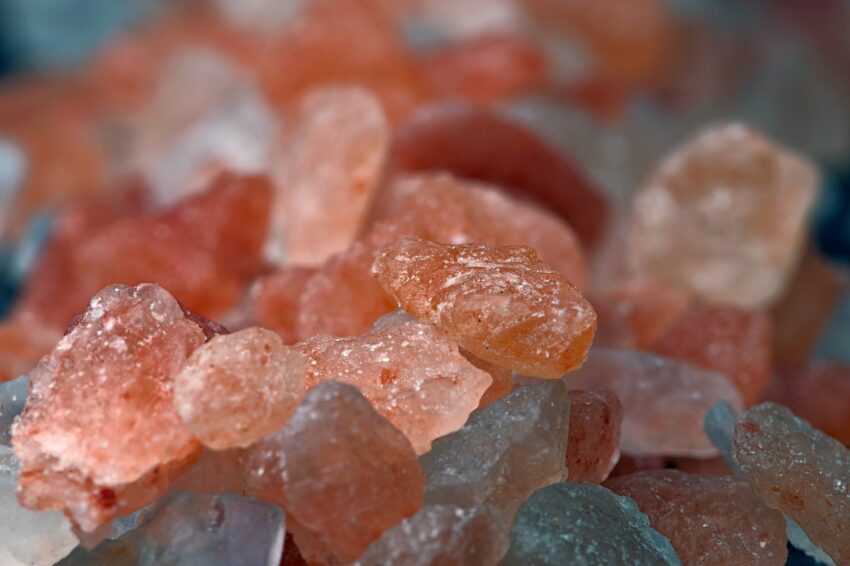Salt and Its Types
Salt, scientifically known as sodium chloride (NaCl), is a vital mineral that plays a crucial role in maintaining the balance of fluids in the body, transmitting nerve signals, and supporting muscle function. It is one of the most widely used seasonings in the world, enhancing the flavour of food and serving as a preservative for centuries. While salt is an everyday essential, it is not a one-size-fits-all ingredient. Various types of salt exist, each differing in texture, taste, and mineral composition.

Salt and its diverse varieties.
1. Table Salt
Table salt is the most common type found in households and supermarkets. It is refined to remove impurities, making it almost entirely sodium chloride. Often, table salt is fortified with iodine to prevent iodine deficiency, which can lead to thyroid-related issues. The fine granules make it ideal for baking and cooking where precise measurement is necessary. However, its processing removes trace minerals, making it less complex in flavour compared to other types.
2. Sea Salt
Sea salt is derived from the evaporation of seawater and retains trace minerals like magnesium, potassium, and calcium, which contribute to its subtle, complex flavour. It typically has a coarser texture than table salt, making it a favourite for finishing dishes or adding a slight crunch. Sea salt can vary in colour depending on its source, with some varieties showcasing hues of pink, grey, or black.
3. Himalayan Pink Salt
This type of salt is mined from ancient sea beds in the Himalayan mountains. Its pink hue comes from trace amounts of iron oxide and other minerals. Himalayan pink salt is celebrated for its purported health benefits, including improving hydration and balancing pH levels. It is often used for culinary purposes, as well as in spa treatments like salt lamps or bath salts.
4. Kosher Salt
Kosher salt has a coarse texture and is free of additives like iodine. It gets its name from its traditional use in koshering meats, where its larger crystals draw out blood during the preparation process. Due to its texture, it is easier to pinch and sprinkle, making it a popular choice among chefs for seasoning and garnishing.

5. Celtic Sea Salt
Celtic sea salt, also known as grey salt, is harvested from coastal areas in France. Its greyish colour comes from the minerals in the clay beds where it is collected. This moist, mineral-rich salt has a briny flavour and is often used as a finishing salt to enhance dishes like seafood and vegetables.
6. Fleur de Sel
Translated as “flower of salt,” fleur de sel is a premium type of sea salt that forms as a delicate crust on the surface of seawater during evaporation. It is hand-harvested in small quantities and prized for its light, flaky texture and subtle flavour. Often used as a finishing salt, it is sprinkled sparingly on dishes to add a gourmet touch.
7. Black Salt (Kala Namak)
Black salt, or kala namak, is commonly used in South Asian cuisines. It is unrefined and has a distinctive sulfuric aroma and taste due to its high sulfur content. Black salt is often used in chaat, chutneys, and beverages like jaljeera for its unique tangy flavour.
8. Rock Salt (Sendha Namak)
Rock salt is a large, unrefined crystal salt that is commonly used during fasting in Indian traditions. It is less processed and retains trace minerals. Rock salt is also believed to aid in digestion and boost metabolism.

Uses and Health Considerations
While salt is essential, excessive consumption can lead to health issues like high blood pressure, cardiovascular problems, and kidney disease. The daily recommended intake of sodium is around 2,300 milligrams, which is roughly one teaspoon of salt. To maintain a balanced diet, it’s crucial to monitor salt consumption and choose unrefined, mineral-rich varieties whenever possible.
In conclusion, salt is more than just a seasoning—it’s a culinary and cultural staple with diverse forms and flavours. Exploring different types of salt can elevate your cooking and provide additional health benefits, making it a fascinating ingredient worth understanding.

